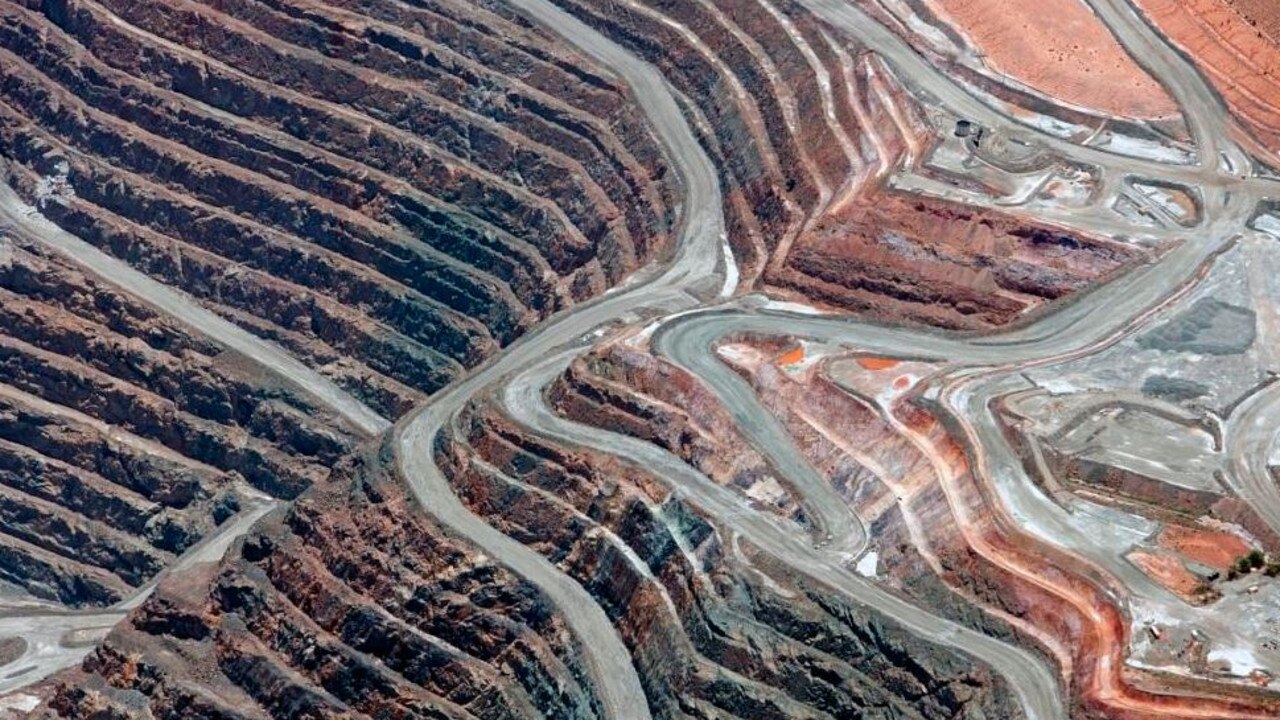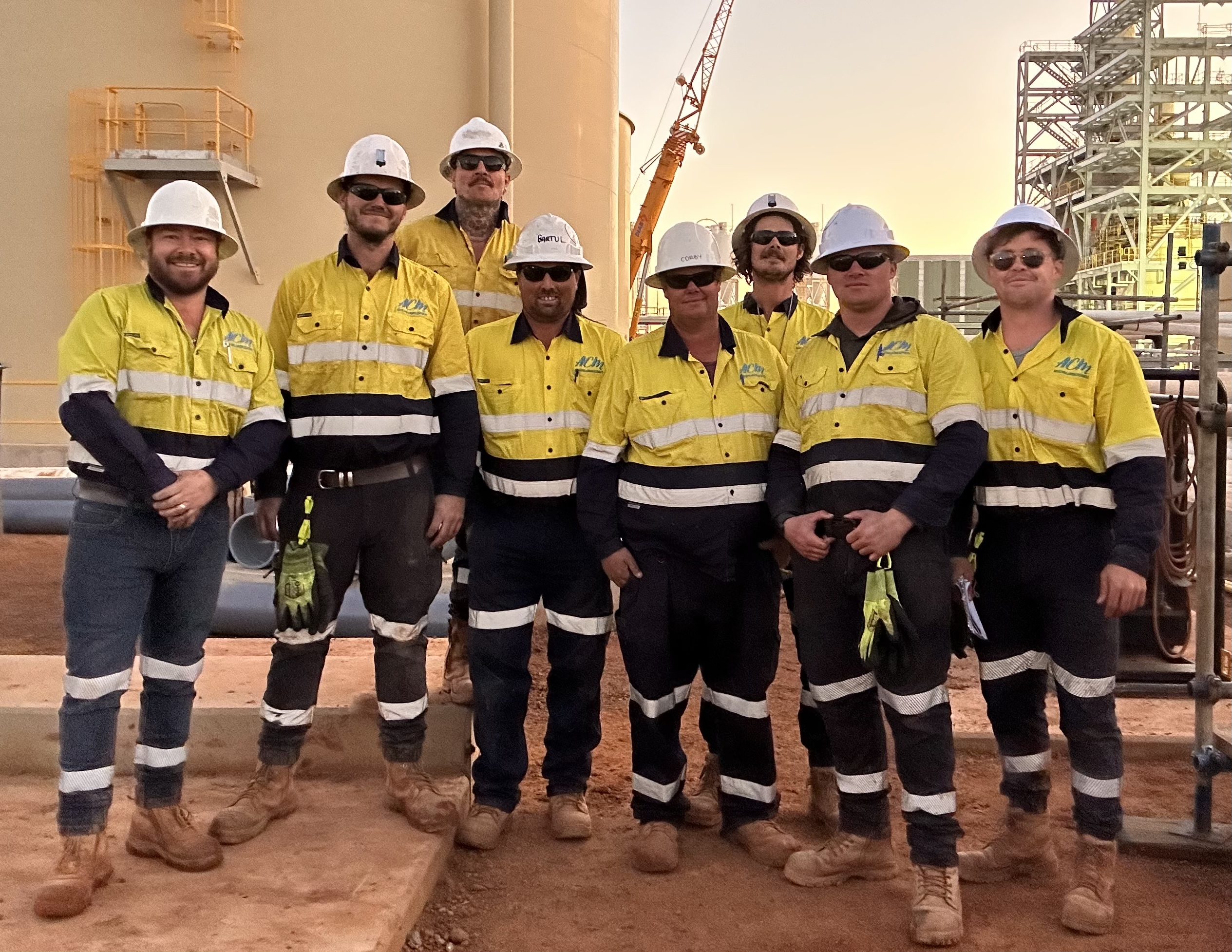Overview of the Resources Sector in Western Australia
Significance and Scale
- Western Australia (WA) is a major hub for the resources sector, notably in mining and natural resource extraction.
- The sector includes a variety of commodities like iron ore, natural gas, gold, and a range of other minerals.
- This sector is a significant contributor to the Australian economy, particularly in terms of exports and employment.
Key Players and Regions
- The sector features a mix of major global players and smaller, domestic companies.
- Key mining regions include the Pilbara (known for its iron ore), the Goldfields, and the Kimberley.
- Offshore, WA is also important for its liquefied natural gas (LNG) projects.
Technological Advancements
- The sector is known for its adoption of advanced mining technologies and automation, setting benchmarks in efficiency and safety.
General Context of the Labor Shortage Issue
Emergence of the Problem
- Over recent years, WA’s resources sector has faced a significant labor shortage.
- This shortage impacts various levels of operation, from skilled professionals to labor-intensive mining roles.
Contributing Factors
- Several factors contribute to this situation:
- Demographic Shifts: An aging workforce and a gap in attracting younger workers.
- Immigration and Mobility Restrictions: Tightened immigration policies and inter-state mobility restrictions, partly due to the COVID-19 pandemic, have limited the availability of skilled workers from outside WA.
- Competing Industries: Other booming sectors in Australia compete for the same pool of skilled labor.
- Education and Training Gaps: A disconnect between the skills taught in educational institutions and those required in the resources sector.
Implications
- This labor shortage has led to operational delays, increased costs, and has put pressure on existing workers.
- There is also a concern about maintaining sustainable growth and innovation in the sector amid these challenges.
Current Responses
- Industry and government responses include initiatives to train local workers, attempts to reform immigration policies to attract international talent, and increased investment in automation and technology to reduce labor dependence.
This overview provides a foundation for understanding the resources sector in Western Australia and the labour shortage issue. The situation is dynamic, with ongoing developments in response to both local and global economic conditions.
Historical Perspective
A Brief History of the Resources Sector in Western Australia
Early Development
- The resources sector in Western Australia (WA) has been a cornerstone of the state’s economy for over a century.
- The discovery of gold in the late 19th century, particularly in regions like Kalgoorlie, marked the beginning of the mining boom in WA. This led to significant population growth and economic development.
Post-World War II Expansion
- After World War II, there was a significant expansion in mining activities.
- The 1960s saw the discovery and development of vast iron ore deposits in the Pilbara region. This era heralded a new phase in the resources sector, transitioning WA into one of the world’s major iron ore producers.
Diversification and Growth
- Over the following decades, the sector diversified beyond gold and iron ore.
- The development of large-scale projects for nickel, bauxite, and later, liquefied natural gas (LNG), positioned WA as a multi-commodity resources hub.
- The 1980s and 1990s saw increased foreign investment and the introduction of advanced mining technologies.
The Resources Boom
- The early 21st century, particularly the 2000s, witnessed a resources boom driven by rising commodity prices and strong demand from emerging economies, especially China.
- This period was characterized by significant investment in new projects, expansion of existing operations, and a substantial increase in employment in the sector.
Past Trends in Employment and Labor Demands
Initial Labor Trends
- In the early stages, the sector relied heavily on a workforce drawn from within Australia, often involving migration from other states to WA.
- The labor force was predominantly manual, with a focus on skilled tradespeople, machinery operators, and laborers.
Shifts in the 20th Century
- Post-World War II expansions saw a growing need for a more diverse range of skills, including engineering, geology, and later, environmental science.
- The sector began attracting a more skilled workforce, with an emphasis on technical expertise and professional qualifications.
21st Century Dynamics
- The boom of the 2000s led to a surge in demand for labor, creating a competitive job market with high wages and incentives to attract workers.
- This period also saw an increase in the use of Fly-In Fly-Out (FIFO) workers to meet labor demands in remote mining locations.
- There was a growing emphasis on safety and environmental management, requiring specialized skills and training.
Recent Trends and Challenges
- In recent years, the sector has faced challenges in maintaining a stable workforce.
- The end of the mining boom, fluctuating commodity prices, and evolving technological needs have impacted employment trends.
- The sector has increasingly turned towards automation and digital technologies, changing the nature of labor demands.
This historical perspective shows how the resources sector in WA has evolved, shaping and being shaped by employment and labor trends over time. The current labor shortage issue can be better understood against this backdrop of changing economic, technological, and demographic dynamics.
Current Labor Shortage
Detailed Analysis of the Current State of Labor Shortage
Scope and Severity
- The resources sector in Western Australia (WA) is currently experiencing a significant labor shortage that is affecting various levels of operations.
- The shortage spans across skilled and unskilled roles, from technical specialists and engineers to machinery operators and general laborers.
Sector-Specific Challenges
- The mining industry, which is a major component of WA’s resources sector, has been particularly hard-hit.
- There is a notable deficit in skilled workers such as geologists, mining engineers, and experienced tradespeople like electricians and mechanics.
- The oil and gas sector is also facing a similar crunch, especially in offshore projects.
Statistics and Data Highlighting the Extent of the Issue
Quantifying the Shortage
- As of my last update in April 2023, specific numbers reflecting the extent of the labor shortage vary, but it’s widely acknowledged as being significant.
- Reports from industry bodies have indicated a deficit of thousands of workers in the resources sector.
- For example, a survey or report by a leading industry organization might have indicated that there is a need for an additional 10,000 to 20,000 workers over the next few years to meet the demands of ongoing and upcoming projects.
Regional Impacts
- The Pilbara region, being a major hub for iron ore mining, is among the most affected areas.
- Other regions with significant mining activities, like the Goldfields and the Kimberley, are also experiencing similar challenges.
Wage Trends and Job Vacancies
- There has been an upward trend in wages in the sector due to the labor shortage.
- Job vacancy rates in the resources sector are higher compared to the state and national averages, indicating a significant unmet demand for labor.
Turnover and Retention Issues
- High turnover rates are another aspect of this labor shortage, partly driven by the demanding nature of work and the FIFO lifestyle.
- Retention of skilled workers has become a major challenge for many companies in the sector.
This current state of labor shortage is a complex issue influenced by a confluence of factors including demographic shifts, changes in the economic landscape, and evolving skill requirements. The impact is felt not just in operational delays and increased costs, but also in strategic planning and long-term sustainability of the sector. The situation is dynamic, and ongoing efforts are being made by both industry and government to address these challenges.
Causes of the Labor Shortage
The labor shortage in Western Australia’s resources sector can be attributed to a range of interrelated factors. Understanding these causes is crucial for addressing the issue effectively.
Economic Factors
Commodity Prices and Market Demand
- Fluctuations in commodity prices can lead to cyclical employment trends in the resources sector. High prices typically drive expansion and increased labor demand, while price drops can lead to contraction and layoffs.
- The demand from major markets, particularly China, significantly impacts the sector. A surge in demand leads to rapid expansion, requiring more labor than the market can supply in the short term.
Investment and Expansion
- Periods of high investment in new projects or expansion of existing ones increase labor demand, often outpacing the local supply of skilled workers.
- The capital-intensive nature of the industry means that changes in investment due to economic factors directly impact employment.
Social Factors
Workforce Demographics
- An aging workforce is a key factor. As older workers retire, there is a gap in experience and skills that is not being filled quickly enough by younger generations.
- There’s also a challenge in attracting younger workers to the sector, which is often perceived as physically demanding and requiring long periods away from home (especially in FIFO roles).
Migration Policies
- Changes in immigration policies have a direct impact on the availability of skilled foreign workers, who have historically been crucial in filling skill gaps.
- Restrictions on skilled migration, often in response to broader political and economic issues, have exacerbated the labor shortage.
Political and Regulatory Factors
Regulatory Environment
- The regulatory environment, including labor laws and environmental policies, can impact operational costs and the feasibility of projects, indirectly affecting employment.
- Stricter environmental regulations, while necessary for sustainable operations, can lead to increased demand for specialized skills that are in short supply.
Government Policies
- State and federal government policies on mining and resource extraction can influence the sector’s growth and labor needs.
- Policies aimed at boosting local employment and reducing reliance on foreign workers can sometimes have the unintended consequence of exacerbating labor shortages.
Impact of Global Events
COVID-19 Pandemic
- The pandemic had a profound impact, leading to border closures and mobility restrictions, which significantly disrupted the supply of labor, particularly for FIFO workers.
- Health and safety concerns also led to operational changes, impacting productivity and labor demand.
Global Economic Shifts
- Economic shifts and uncertainties, such as trade wars or global financial crises, can affect commodity markets and investment, indirectly impacting labor demand.
In summary, the labor shortage in Western Australia’s resources sector is a multifaceted issue influenced by economic, social, political, and global factors. These elements interact in complex ways, making the challenge of addressing the shortage a dynamic and ongoing process.
Impact on the Sector and Economy
Analysis of How the Labor Shortage is Affecting the Resources Sector
Operational Efficiency and Project Delays
- The labor shortage is directly impacting operational efficiency in the resources sector. With fewer workers, particularly in skilled and specialized roles, projects are experiencing delays.
- These delays can lead to missed deadlines for project completion and increased costs, as companies may have to pay premiums to expedite processes or hire temporary staff at higher rates.
Increased Costs and Investment Risks
- The shortage of labor is driving up wages as companies compete to attract and retain workers, thereby increasing operational costs.
- Higher costs and uncertainties related to workforce availability can make new investments riskier, potentially leading to a slowdown in the initiation of new projects.
Productivity and Innovation Challenges
- A reduced or inexperienced workforce can affect overall productivity levels.
- The labor shortage also impacts the sector’s ability to innovate and implement new technologies, as these often require specialized skills.
Broader Economic Implications for Western Australia and Australia
Contribution to State and National Economy
- The resources sector is a significant contributor to both the Western Australian and Australian economies, in terms of GDP, exports, and employment.
- Any disruptions in this sector due to labor shortages can have a ripple effect, impacting economic growth and revenue generation.
Impact on Local Communities and Employment
- The sector’s labor demands significantly influence employment opportunities and economic wellbeing in many local communities, particularly in regional and remote areas.
- Labor shortages can lead to a reduction in these opportunities, affecting local economies and livelihoods.
Influence on Trade and International Relations
- As a major exporter of commodities like iron ore and LNG, any reduction in production capacity in WA’s resources sector can affect trade balances.
- Prolonged labor shortages and consequent production delays can impact international trade relationships, particularly with key trading partners like China.
Effects on Government Revenue
- The resources sector contributes significantly to government revenues through royalties and taxes. A downturn in sector productivity can lead to reduced government income, impacting public spending and investments.
Broader Economic Stability
- The resources sector’s health is closely tied to the broader economic stability of WA and Australia. Fluctuations in this sector can have far-reaching implications, influencing everything from currency strength to national economic policy decisions.
In summary, the labor shortage in Western Australia’s resources sector has wide-ranging impacts, affecting not only the sector itself but also the broader economic landscape of both the state and the country. Addressing this shortage is crucial for maintaining economic growth, stability, and continued development in the region.
Responses and Strategies
How Companies and the Government are Responding to the Shortage
Company Initiatives
- Increased Wages and Benefits: Many companies are offering higher wages and better benefits to attract and retain workers.
- Training and Development Programs: To tackle the skills gap, companies are investing in training programs for their employees, including apprenticeships and partnerships with educational institutions.
- Workforce Diversification: Efforts are being made to diversify the workforce, including initiatives to increase the participation of women, indigenous communities, and other underrepresented groups.
- Technological Advancements: Adoption of automation and AI to reduce dependence on human labor, especially for repetitive and hazardous tasks.
Government Policies
- Immigration Policy Reforms: The government is re-evaluating immigration policies to facilitate the entry of skilled foreign workers needed in the resources sector.
- Educational and Vocational Training Programs: Initiatives to align educational curricula with industry needs, focusing on skills crucial for the modern resources sector.
- Investment in Regional Development: Programs to develop infrastructure and amenities in regional areas to make them more attractive to potential employees.
- Support for Research and Innovation: Funding and support for research into new technologies and processes that can improve efficiency and reduce labor reliance.
Short-term and Long-term Strategies Being Implemented or Proposed
Short-term Strategies
- Temporary Skilled Migration: Facilitating temporary visas for skilled workers to quickly address critical skill shortages.
- Local Recruitment Drives: Intensified recruitment efforts within Australia, including targeted campaigns and incentives for Australian workers to join the sector.
- Flexible Work Arrangements: Implementing more flexible work arrangements, including remote working options where possible, to attract a broader range of employees.
Long-term Strategies
- Education and Training Focus: Long-term investment in education and vocational training to build a sustainable pipeline of skilled workers.
- Industry-Government Collaboration: Ongoing collaboration between the industry and government to ensure that policies and initiatives are aligned with sector needs and future trends.
- Technological Innovation and Automation: Continued investment in automation and innovative technologies to reduce labor intensity and improve efficiency.
- Sustainable Development Practices: Emphasizing sustainable and environmentally friendly practices to make the sector more attractive to the modern workforce, which is increasingly conscious of environmental and sustainability issues.
In conclusion, the response to the labor shortage in Western Australia’s resources sector involves a multi-faceted approach, combining immediate measures with long-term strategies. Both companies and the government play crucial roles in implementing these responses to ensure the sustainable growth and competitiveness of the sector.
Case Studies
Specific Examples of Companies or Projects Affected
Case Study 1: Major Iron Ore Producer in the Pilbara
- Situation: One of the largest iron ore producers in the Pilbara region faced significant delays in a major expansion project due to a shortage of skilled workers, particularly in heavy machinery operation and engineering.
- Impact: The delay led to cost overruns in the millions and postponed the project’s completion date, affecting the company’s overall production targets and financial forecasts.
Case Study 2: Offshore LNG Project
- Situation: An offshore LNG project struggled with a labor shortage exacerbated by COVID-19 restrictions, impacting the availability of specialized offshore workers and engineers.
- Impact: The shortage resulted in extended project timelines and increased reliance on costly temporary labor solutions, impacting the project’s profitability and operational efficiency.
Success Stories of Managing or Mitigating Labor Shortages
Case Study 3: Innovative Mining Company Implementing Automation
- Situation: A mid-sized mining company responded to labor shortages by aggressively investing in automation technologies, including autonomous haul trucks and drill rigs.
- Strategy: The company not only invested in technology but also retrained its workforce to manage and maintain these automated systems.
- Outcome: This approach allowed the company to maintain production levels with a smaller workforce, reduce operational costs, and improve safety standards.
Case Study 4: Collaborative Training Initiatives
- Situation: A consortium of mining companies in WA collaborated with a local technical institute to create specialized training programs tailored to the skills needed in modern mining operations.
- Strategy: The program focused on practical, hands-on training, with students spending time on actual mining sites. The companies guaranteed employment opportunities for successful graduates.
- Outcome: This initiative helped create a steady pipeline of trained workers, specifically skilled in areas where shortages were most acute. It also helped improve local employment rates and community relations.
These case studies highlight the varied impacts of labor shortages on companies and projects within Western Australia’s resources sector, as well as the innovative strategies being employed to manage and mitigate these challenges. The success stories demonstrate the importance of adaptability, technological investment, and collaborative efforts between industry and educational institutions in addressing workforce challenges.
Conclusion and Future Outlook
Summarization of Key Points
- Labor Shortage Impact: The labor shortage in Western Australia’s resources sector has had significant impacts on operational efficiency, project timelines, and costs. It affects companies across various commodities and sizes.
- Multifaceted Causes: This shortage is attributed to a combination of economic, social, political, and global factors, including commodity market fluctuations, demographic shifts, migration policies, and impacts of the COVID-19 pandemic.
- Sector and Economic Implications: The labor shortage not only affects individual companies and projects but also has broader implications for the Western Australian and Australian economies, influencing everything from local employment to international trade relations.
- Responses and Strategies: Both companies and the government have been responding with short-term and long-term strategies, focusing on increased wages, training programs, technological innovation, and policy reforms.
Predictions or Projections for the Future
- Technological Advancements: The trend towards automation and digitalization is likely to continue, potentially reducing the sector’s overall labor intensity. This will also shift the type of workforce needed, with a greater emphasis on tech-savvy personnel.
- Workforce Development: Long-term investments in education and training are expected to gradually alleviate the skill gap. Collaborations between the industry and educational institutions will play a crucial role in developing a workforce aligned with future industry needs.
- Policy Adjustments: Government policies, particularly regarding immigration and educational curricula, are likely to evolve in response to the sector’s needs. Flexible and responsive policy frameworks will be key to ensuring a steady supply of skilled labor.
- Diversification and Inclusivity: Efforts to diversify the workforce, including increasing the participation of women and underrepresented groups, will contribute to a more resilient and flexible labor pool.
- Economic Adaptability: The resources sector in WA is expected to remain a major economic driver. However, its growth and stability will increasingly depend on the industry’s ability to adapt to changing economic conditions and labor market realities.
In conclusion, while the labor shortage in Western Australia’s resources sector presents significant challenges, ongoing responses and strategies provide a pathway toward mitigation and adaptation. The future of the sector hinges on its ability to innovate, diversify, and develop a workforce that is equipped to handle the evolving demands of this dynamic industry.












